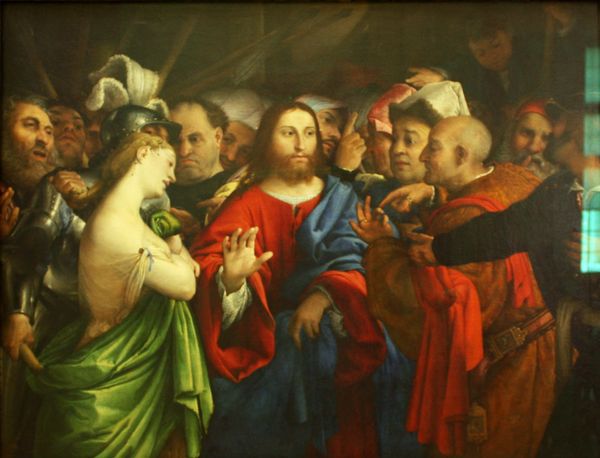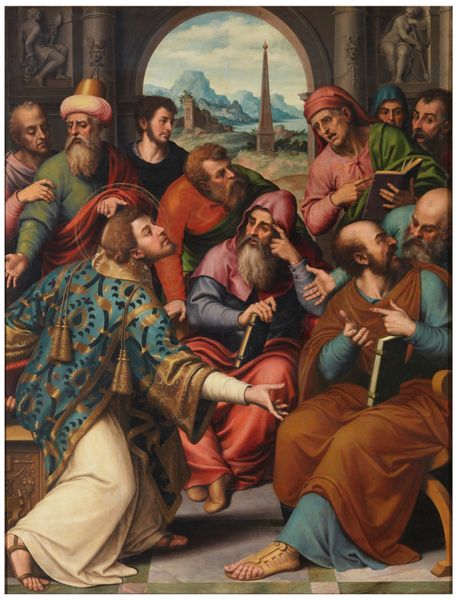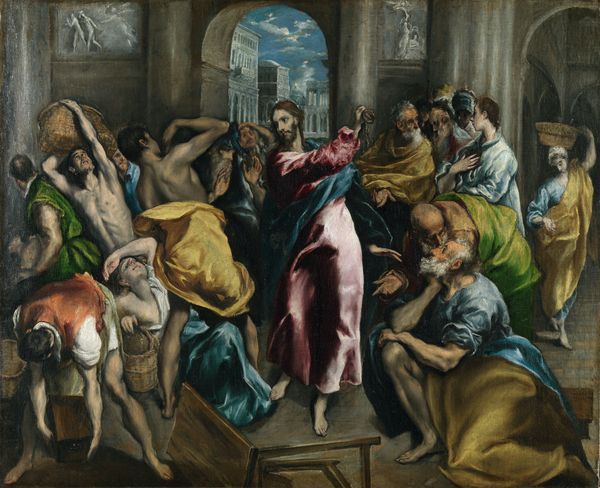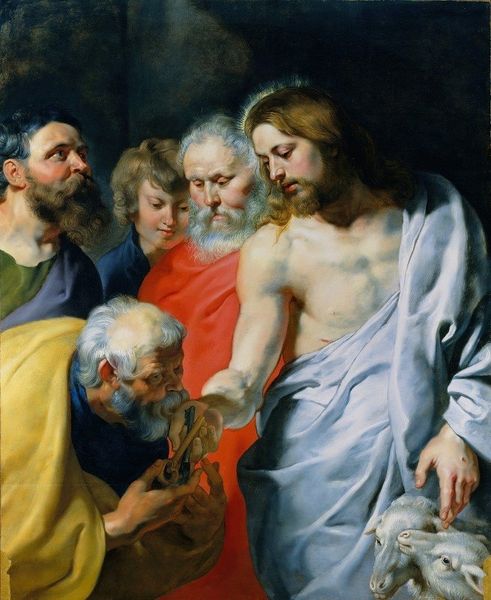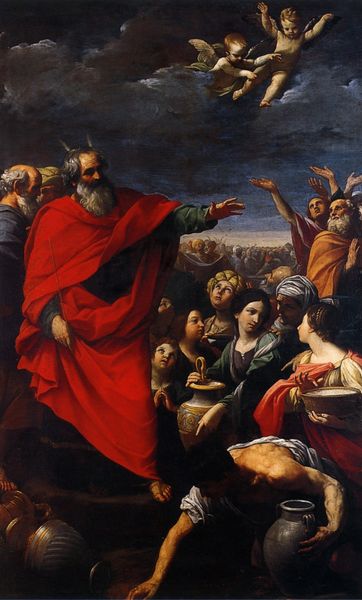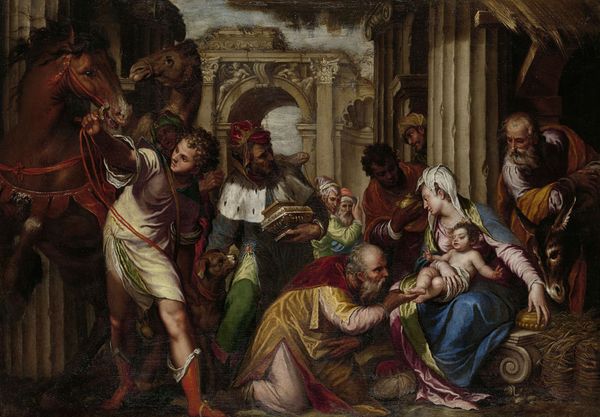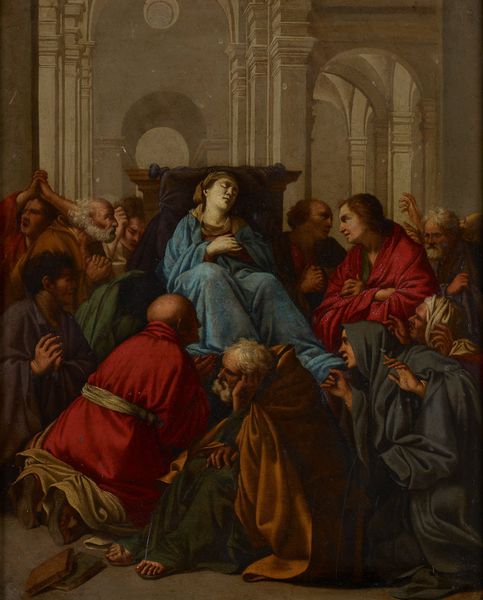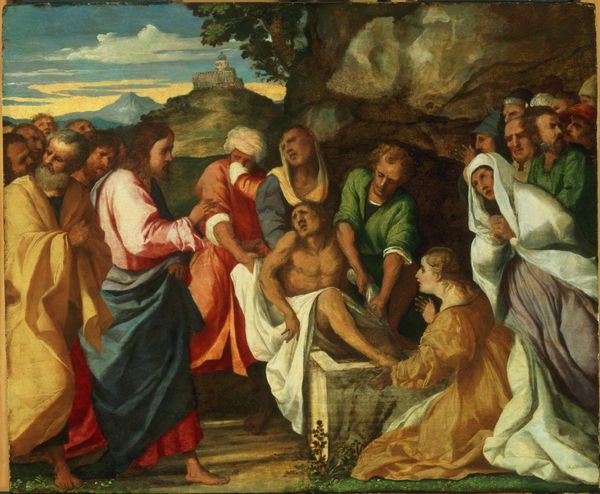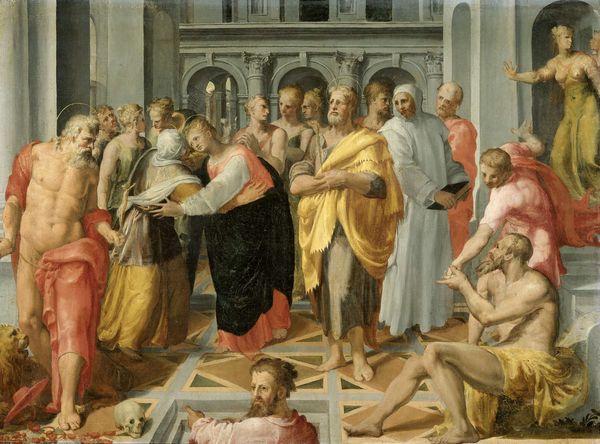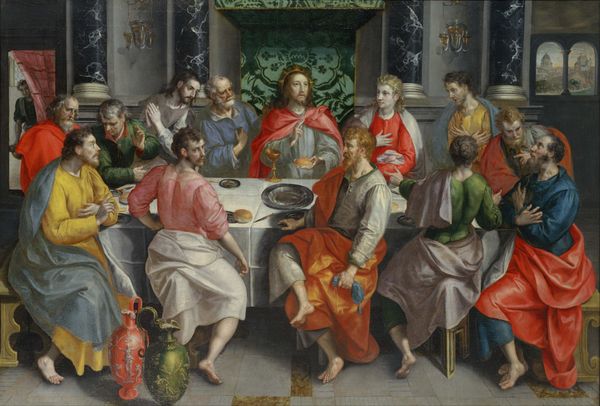
Christ and the Woman Taken in Adultery c. 1540
0:00
0:00
oil-paint
#
narrative-art
#
oil-paint
#
figuration
#
11_renaissance
#
oil painting
#
history-painting
#
italian-renaissance
Dimensions: 61 1/4 x 81 in. (155.6 x 205.7 cm)
Copyright: Public Domain
Curator: Here we have “Christ and the Woman Taken in Adultery,” thought to be from the Workshop of Paolo Veronese, around 1540. It's oil on canvas. What strikes you about it? Editor: It’s opulent, even for a biblical scene. The colors—rich reds and greens—grab me immediately. And everyone's draped in so much fabric. Almost theatrical, don’t you think? Curator: The Renaissance loved drama! I see it as more of a commentary on judgment and forgiveness. Think about it—the adulteress is publicly shamed, and then Christ intervenes, challenging those ready to condemn her. What a poignant emotional tightrope. Editor: Poignant, sure, but let's talk about those clothes! Who designed them? What were they made of? Where did the patrons source them? Look at the boy off to the left - beautiful textile. Understanding the production and value of these materials then would completely alter how we understand the narrative on display here, wouldn't it? Curator: You bring up a fascinating point about the socio-economic lens we apply to art. Absolutely. It’s a complex dialogue about power, textiles, piety and social standing, and how it reflects the Venetian society in which it was produced. Editor: Exactly! And thinking about the labour involved in producing these paintings too. Assistants in the studio churning out piece after piece… Veronese wasn't a solitary genius, he was a factory boss. Curator: Haha, perhaps! But there is some grace, too. Something about the way Christ gestures. There’s an aura, even a defiance, in that upraised finger of his. To think he says, "He that is without sin among you, let him first cast a stone at her," It speaks to our potential for empathy and to break free from the restrictive elements of religion in its organized, judgmental form. Editor: Okay, okay, grace noted. I will also note though, how that axe head of the soldier just shines! No one, not even the pure and divine, got anywhere back then without plenty of weaponry available. Now THAT sends a real message. Curator: Point taken! See? We peel back the layers and reveal new insights and more intricate textures beneath the surface of paint and material. Editor: Yes, a conversation about faith, sin, fabrics, and...axes. Now that's a good story.
Comments
No comments
Be the first to comment and join the conversation on the ultimate creative platform.
